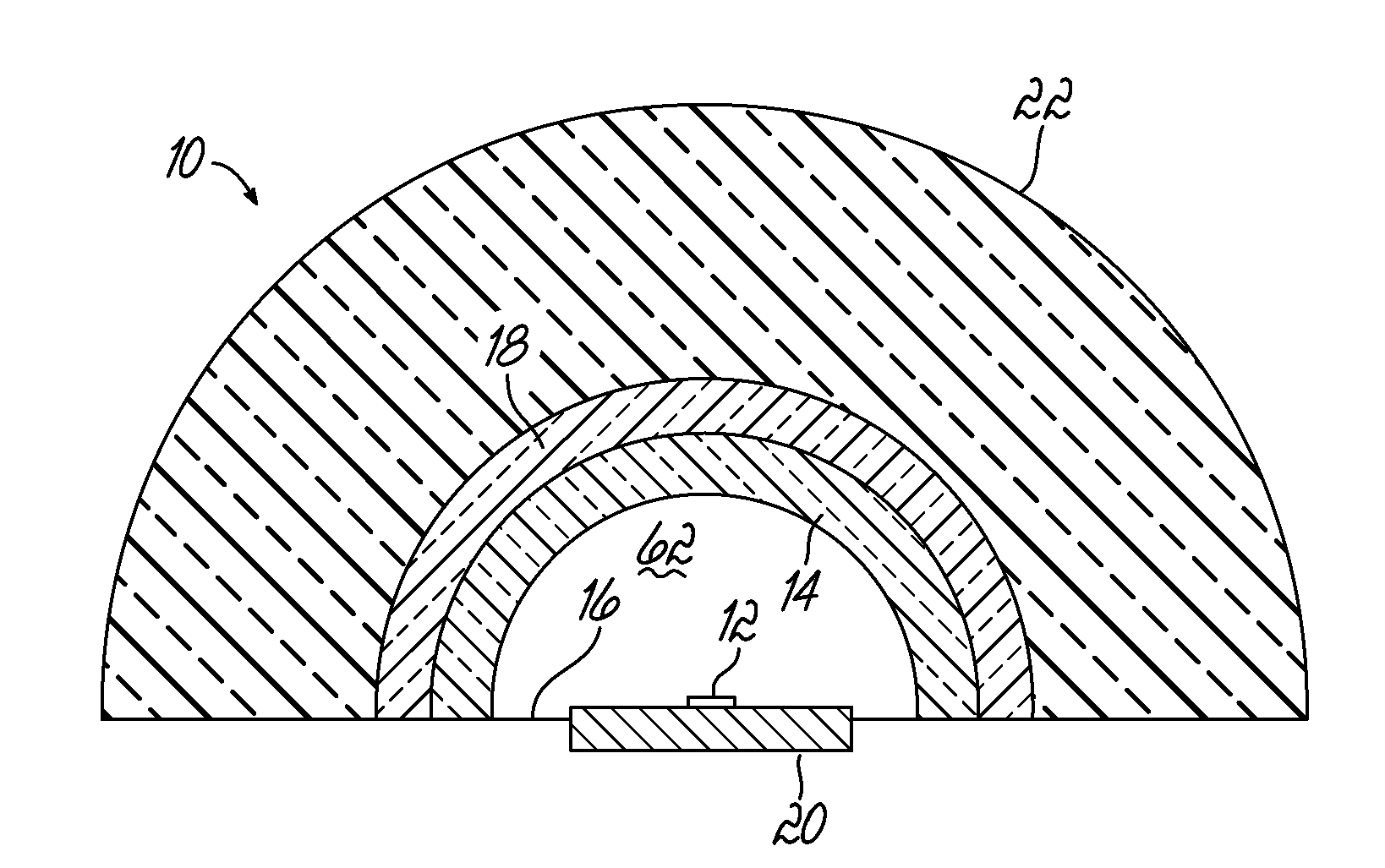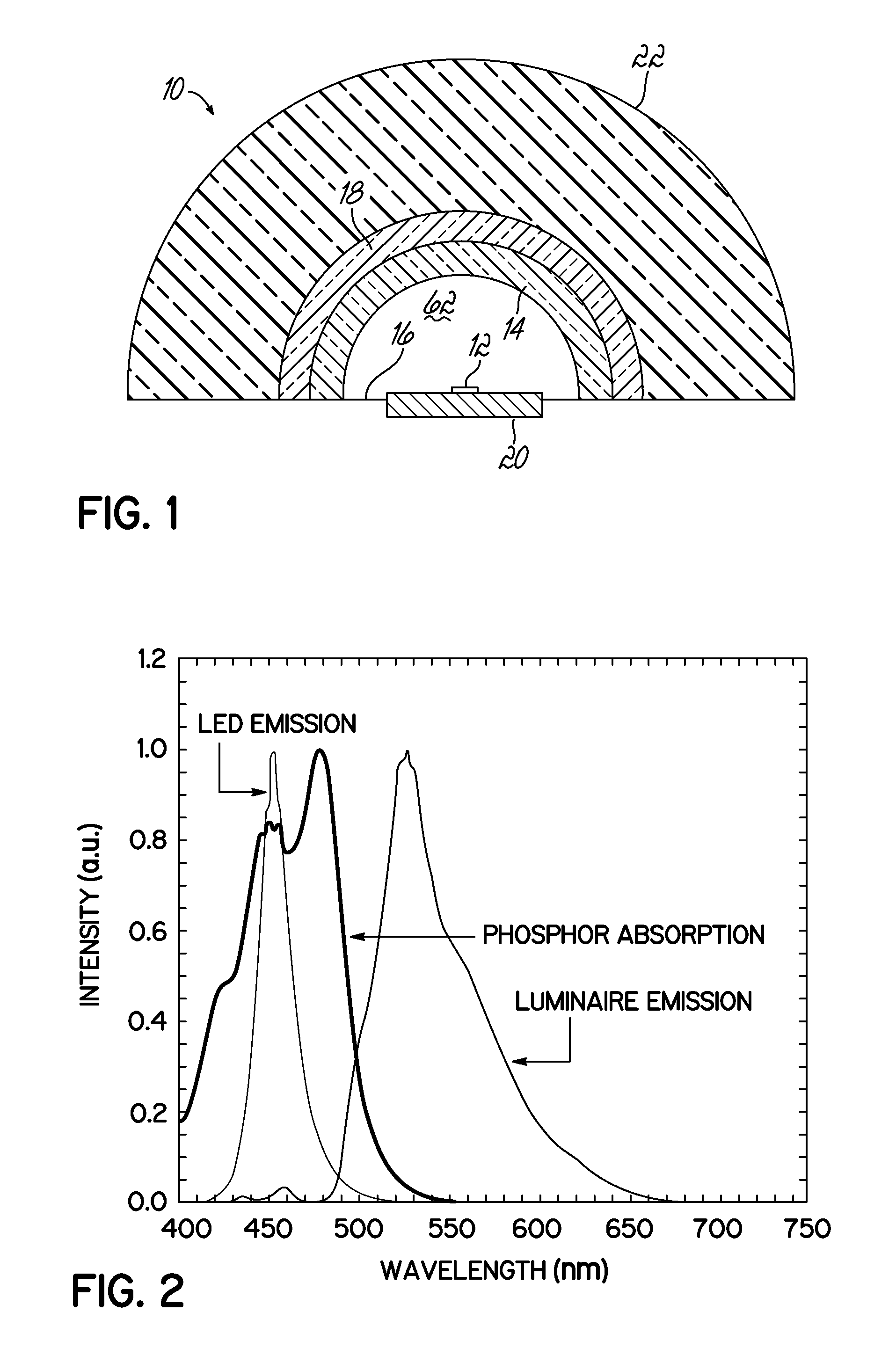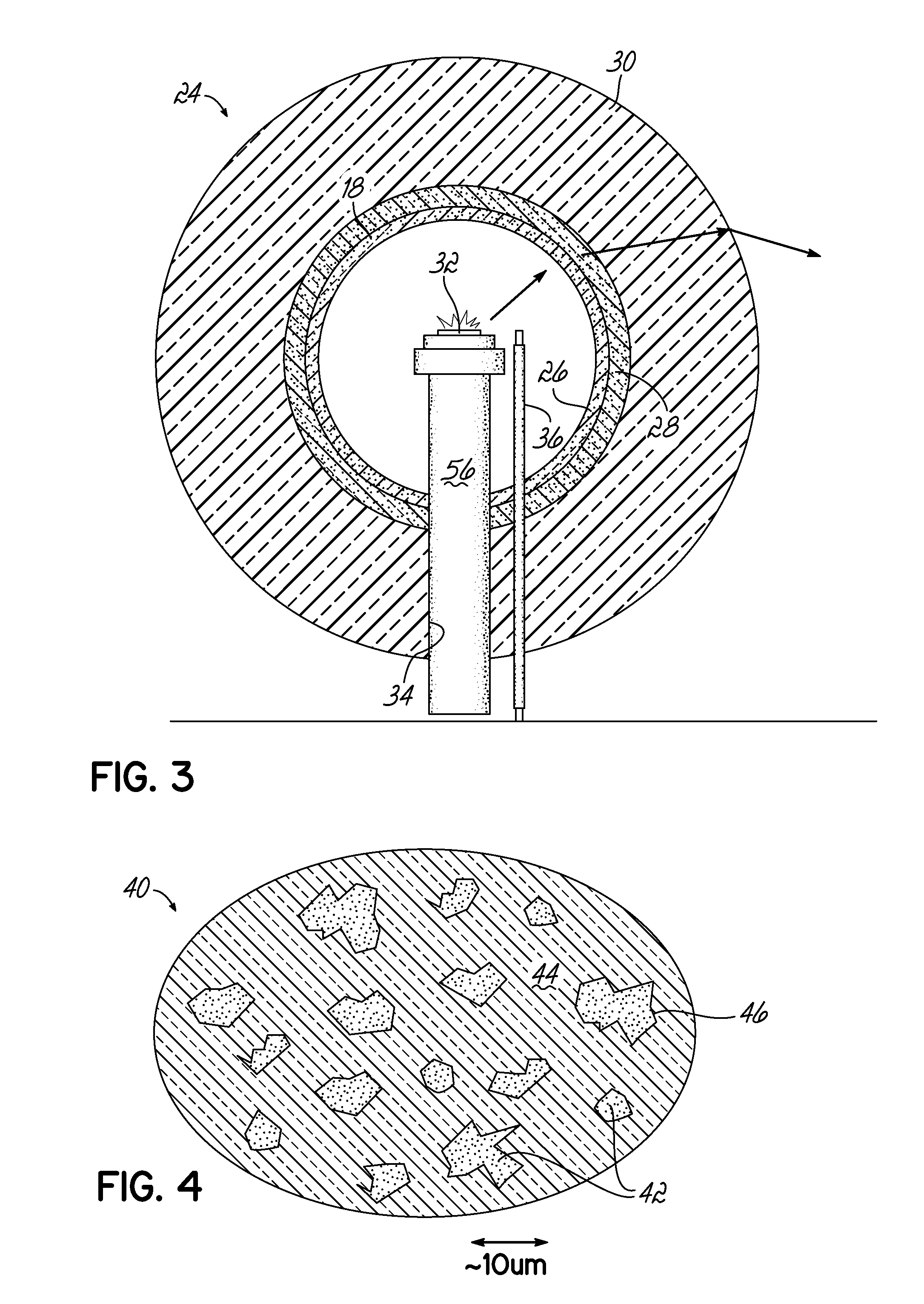Nearly Index-Matched Luminescent Glass-Phosphor Composites For Photonic Applications
a technology of phosphor-converting leds and luminescent glass, which is applied in the direction of discharge tube luminescnet screens, discharge tubes/lamp details, semiconductor lasers, etc., can solve the problems of inefficient extraction of phosphor-converted light, wavelength conversion suffers from phosphor conversion loss, and devices have deficiencies
- Summary
- Abstract
- Description
- Claims
- Application Information
AI Technical Summary
Benefits of technology
Problems solved by technology
Method used
Image
Examples
example 1
[0058]The efficiency of the ELIXIR LED 10 according to the present invention is demonstrated with a computer simulation of a ray tracing diagram, shown in FIG. 9. Herein, the ELIXIR LED 10 is constructed as described above with a phosphor radius, r, and equal to 1.9 cm.
[0059]The ray tracing diagram illustrates the various paths the phosphor-emitting photons can take in exiting the ELIXIR LED 10. Ray 1 exits the ELIXIR LED 10 without encountering any reflections and comprises approximately 35% of the phosphor-emissions. Ray 2 (representing approximately 35% of the phosphor-emission) demonstrates one particular benefit of the ELIXIR LED 10. Ray 2 is emitted in a direction toward the planar reflector 16, where substantial emissions loss occurs in a conventional pcLED package design. However, in the ELIXIR LED 10, the phosphor emission is reflected at the phosphor-air interface 112. Ray 2 can then exit the ELIXIR LED 10 and may avoid the planar reflector 16 entirely. Ray 3, comprising a...
PUM
| Property | Measurement | Unit |
|---|---|---|
| Fraction | aaaaa | aaaaa |
| Fraction | aaaaa | aaaaa |
| Fraction | aaaaa | aaaaa |
Abstract
Description
Claims
Application Information
 Login to View More
Login to View More - R&D
- Intellectual Property
- Life Sciences
- Materials
- Tech Scout
- Unparalleled Data Quality
- Higher Quality Content
- 60% Fewer Hallucinations
Browse by: Latest US Patents, China's latest patents, Technical Efficacy Thesaurus, Application Domain, Technology Topic, Popular Technical Reports.
© 2025 PatSnap. All rights reserved.Legal|Privacy policy|Modern Slavery Act Transparency Statement|Sitemap|About US| Contact US: help@patsnap.com



